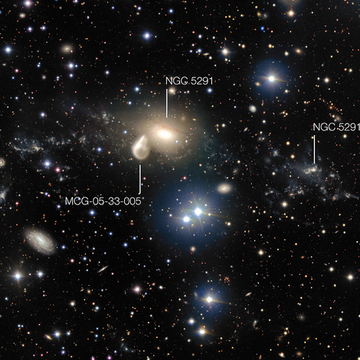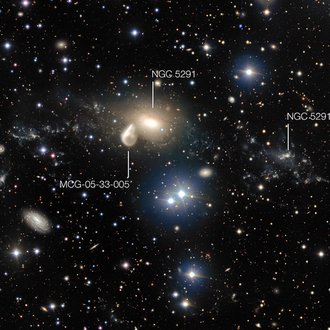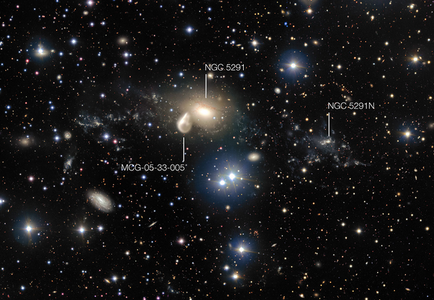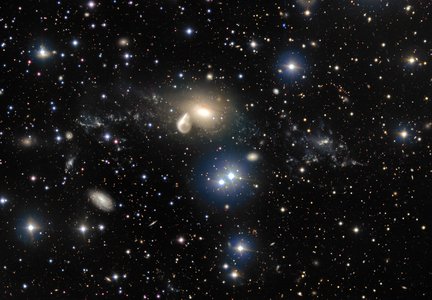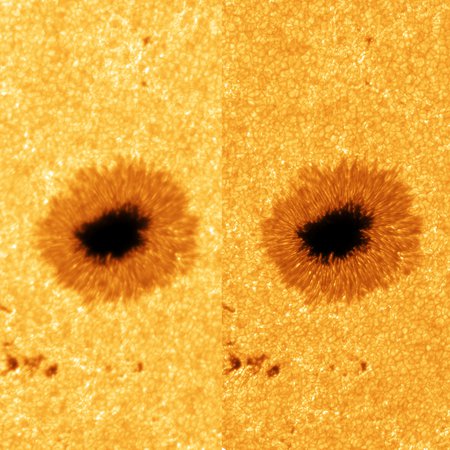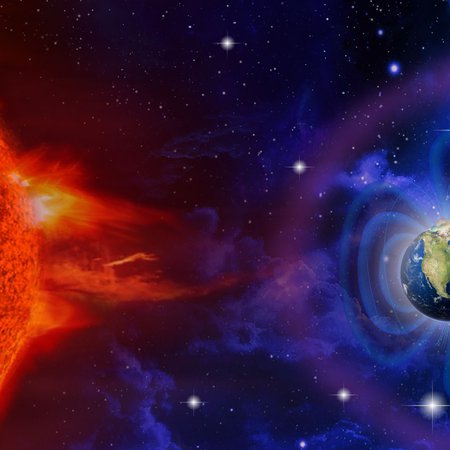A Curious Cosmic Collision
New images from ESO’s Very Large Telescope at the Paranal Observatory show the spectacular aftermath of a 360 million year old cosmic collision in great detail. Among the debris is a rare and mysterious young dwarf galaxy that was observed during the first science verification run of the integral field spectrograph MUSE.
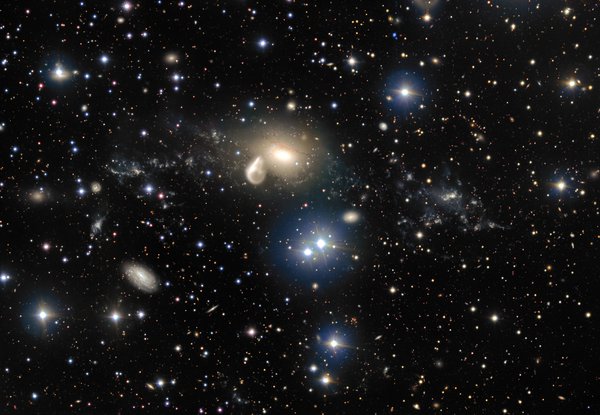
The new VLT images also show the elliptical galaxy NGC 5291, a hazy, golden oval dominating the centre of this image. It is located nearly 200 million light-years away in the constellation of Centaurus (The Centaur). Over 360 million years ago, NGC 5291 was involved in a dramatic and violent collision as another galaxy travelling at immense speeds barrelled into its core. The cosmic crash ejected huge streams of gas into nearby space, which later coalesced into a ring formation around NGC 5291. Over time, material in this ring gathered and collapsed into dozens of star-forming regions and several dwarf galaxies, revealed as pale blue and white regions scattered around NGC 5291 in this new image from the FORS instrument, mounted on the VLT. The most massive and luminous clump of material, to the right of NGC 5291, is the dwarf galaxy NGC 5291N. NGC 5291 is currently also interacting more gently with MCG-05-33-005 — or the Seashell Galaxy — the unusual comma-shaped galaxy appearing to leech off NGC 5291’s luminous core.
Credit: ESOFurther information
The full science release, more information, images and videos are published on the ESO website:
https://www.eso.org/public/germany/news/eso1547
Publication: This research was presented in a paper entitled “Ionization processes in a local analogue of distant clumpy galaxies: VLT MUSE IFU spectroscopy and FORS deep images of the TDG NGC 5291N”, by J. Fensch et al., to appear in the journal Astronomy & Astrophysics.
The team is composed of J. Fensch (Laboratoire AIM Paris-Saclay, CEA/IRFU/SAp, Universite Paris Diderot, Gif-sur-Yvette, France [CEA]), P.-A. Duc (CEA) , P. M. Weilbacher (Leibniz-Institut für Astrophysik, Potsdam, Germany), M. Boquien (University of Cambridge, United Kingdon; Universidad de Antofagasta, Antofagasta, Chile) and E. Zackrisson (Uppsala University, Uppsala, Sweden).
New images from ESO’s Very Large Telescope at the Paranal Observatory show the spectacular aftermath of a 360 million year old cosmic collision in great detail. Among the debris is a rare and mysterious young dwarf galaxy that was observed during the first science verification run of the integral field spectrograph MUSE.

The new VLT images also show the elliptical galaxy NGC 5291, a hazy, golden oval dominating the centre of this image. It is located nearly 200 million light-years away in the constellation of Centaurus (The Centaur). Over 360 million years ago, NGC 5291 was involved in a dramatic and violent collision as another galaxy travelling at immense speeds barrelled into its core. The cosmic crash ejected huge streams of gas into nearby space, which later coalesced into a ring formation around NGC 5291. Over time, material in this ring gathered and collapsed into dozens of star-forming regions and several dwarf galaxies, revealed as pale blue and white regions scattered around NGC 5291 in this new image from the FORS instrument, mounted on the VLT. The most massive and luminous clump of material, to the right of NGC 5291, is the dwarf galaxy NGC 5291N. NGC 5291 is currently also interacting more gently with MCG-05-33-005 — or the Seashell Galaxy — the unusual comma-shaped galaxy appearing to leech off NGC 5291’s luminous core.
Credit: ESOFurther information
The full science release, more information, images and videos are published on the ESO website:
https://www.eso.org/public/germany/news/eso1547
Publication: This research was presented in a paper entitled “Ionization processes in a local analogue of distant clumpy galaxies: VLT MUSE IFU spectroscopy and FORS deep images of the TDG NGC 5291N”, by J. Fensch et al., to appear in the journal Astronomy & Astrophysics.
The team is composed of J. Fensch (Laboratoire AIM Paris-Saclay, CEA/IRFU/SAp, Universite Paris Diderot, Gif-sur-Yvette, France [CEA]), P.-A. Duc (CEA) , P. M. Weilbacher (Leibniz-Institut für Astrophysik, Potsdam, Germany), M. Boquien (University of Cambridge, United Kingdon; Universidad de Antofagasta, Antofagasta, Chile) and E. Zackrisson (Uppsala University, Uppsala, Sweden).
Images
The surroundings of the interacting galaxy NGC 5291 (annotated).
The new VLT images also show the elliptical galaxy NGC 5291, a hazy, golden oval dominating the centre of this image. It is located nearly 200 million light-years away in the constellation of Centaurus (The Centaur). Over 360 million years ago, NGC 5291 was involved in a dramatic and violent collision as another galaxy travelling at immense speeds barrelled into its core. The cosmic crash ejected huge streams of gas into nearby space, which later coalesced into a ring formation around NGC 5291. Over time, material in this ring gathered and collapsed into dozens of star-forming regions and several dwarf galaxies, revealed as pale blue and white regions scattered around NGC 5291 in this new image from the FORS instrument, mounted on the VLT. The most massive and luminous clump of material, to the right of NGC 5291, is the dwarf galaxy NGC 5291N. NGC 5291 is currently also interacting more gently with MCG-05-33-005 — or the Seashell Galaxy — the unusual comma-shaped galaxy appearing to leech off NGC 5291’s luminous core.
Big screen size [1000 x 693, 130 KB]
Original size [3010 x 2086, 950 KB]
